The beauty industry, historically, has been notoriously known as an industry of exclusivity and bias. For centuries, the dominant view of the culture was that the light skin of Caucasians was more attractive than the darker skin of non-Caucasians, in relation to beauty and what defines it. 1 This limited view led the beauty industry to cater predominantly to one demographic, with many brands offering only a 10-20 shade range in facial cosmetic products. Additionally, campaigns often starred thin, conventionally attractive Caucasian women as the standard of beauty, leaving many individuals feeling unrepresented and excluded. 2
However, in the 2010’s the beauty industry experienced a societal shift towards embracing inclusivity and acceptance, and it all started with one brand, Fenty Beauty by Rihanna. Discover how Fenty successfully became the first “Beauty for All” brand and revolutionized the beauty industry FOREVER.

1) Exclude No One
Rihanna, founder of Fenty Beauty, stated her reasoning for developing this line was so “women everywhere could feel included”. To do this, Fenty Beauty, unlike any brand before, focused on a wide range of traditionally hard-to match skin tones and undertones, ensuring their formulas would work for all skin types. With this inclusive mindset strategy women everywhere would be able to find themselves in the brand. This allowed for the brand to launch with 40 foundation shades which has since grown to 50, revolutionizing the consumer expectation for skin tone range. Additionally, Fenty Beauty created an online shade finder, virtual try-on tool and offers free virtual consultations to help customers find the perfect shade. 3
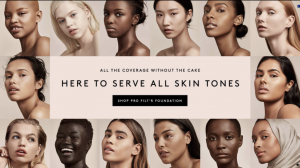
2) Diversity In Representation
Fenty Beauty’s commitment to inclusivity didn’t end at product range either, it extended to their marketing campaigns where models of different races, body types, and backgrounds were represented. This approach allowed underrepresented, underserved women to see others like themselves in a global prestige beauty campaign for the first time. 4
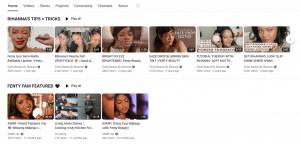
3) Beauty For All
A major contribution to the success of Fenty Beauty was seen from the marketing via social media and online campaigning. By establishing the brand as a “Beauty for All” line, Fenty Beauty was able to communicate themselves as a luxury brand made for all women, accessible to everybody. Further, Fenty Beauty’s social media made it easy for consumers to interact with the brand online, with a consistent feel of community and support. The brands’ socials focus on the consumer experience, showing products, teaching techniques and tips, and emphasizing the value of diversity within the brand. 5

4) Authentic Brand Voice
As founder, Robyn Rihanna Fenty, better known as Rihanna, played a massive role in the brand’s image and audience perception. By maintaining a strong online presence within the brand’s social media channels, and constantly marketing the brand on her personal accounts, she was able to create a luxurious brand image and drive audience engagement and brand perception. 2
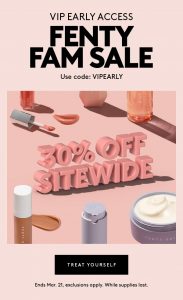
5) Luxury Made Affordable
Fenty’s emphasis on accessibility continues in their pricing, being an affordable luxury brand in comparison to others. Their smaller products vary from prices as low as $10 to $15 and full-size products being only $30-$40. In contrast, other brands such as Charlotte Tilbury, Dior, and Armani Beauty price their similar products anywhere from $44-$65. Further, the brand frequently has online exclusive sales for customers who are part of the VIP club, completely free to join! Although more affordable than most luxury brands, Fenty Beauty’s prices in comparison to drug store makeup brands such as e.l.f. and Wet N Wild are still significantly higher, accomplishing their goal of creating a luxury brand that can still be accessible to everyone. 2
After Fenty Beauty launched, the term “The Fenty Effect” took the beauty industry by storm. The brand’s revolutionary approach caused a chain reaction in the industry to expand on inclusive marketing and emphasize the importance of tailoring both your products and campaigns to resonate with all of your audience, instead of only some.
The introduction of inclusivity in marketing has transformed the way brands interact with their audience. By sharing authentic stories that are rooted in culture and emotionally meaningful to the consumers you serve brands can provide the connection and sincerity that establishes consumer loyalty and trust while representing and empowering individuals everywhere.
- Baumann, Shyon. 2008. “The Moral Underpinnings of Beauty: A Meaning-based Explanation for Light and Dark Complexions in Advertising.” Poetics 36 (1): 2–23. https://doi.org/10.1016/j.poetic.2007.11.002. ↵
- Miller Carson. 2022. “The Fenty Effect: A Case Study on the Fusion of Celebrity, Luxury, and Inclusivity.” Honors Thesis. University of Oregon. ↵
- Fenty Beauty. n.d. “About Fenty Beauty.” https://fentybeauty.com/pages/about-fenty-beauty. ↵
- Saputo, Sandy. 2019. “How Rihanna’s Fenty Beauty Delivered ‘Beauty for All’ — and a Wake-up Call to the Industry.” Think with Google. June 2019. https://www.thinkwithgoogle.com/future-of-marketing/management-and-culture/diversity-and-inclusion/-fenty-beauty-inclusive-advertising/. ↵
- Morett Larrubia Tayssa. 2022. “Communication and Advertising in the Beauty Industry: A Connection to Women’s Consumer Behavior.” Master’s Thesis. IADE Faculty of Design, Technology, and Communication. ↵
- Miller Carson. 2022. “The Fenty Effect: A Case Study on the Fusion of Celebrity, Luxury, and Inclusivity.” Honors Thesis. University of Oregon. ↵
- Miller Carson. 2022. “The Fenty Effect: A Case Study on the Fusion of Celebrity, Luxury, and Inclusivity.” Honors Thesis. University of Oregon. ↵

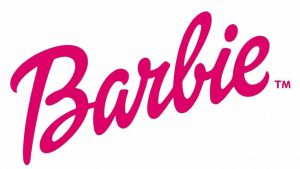
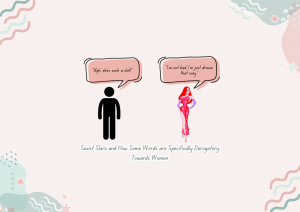
1 comment
Freya Hayes
I really enjoyed this article. I think Fenty Beauty has done a really good job of being inclusive for everyone. Through this article I learned that Rhianna has played a massive role in the brands name as her social media presence with it has done great things for the company. I really enjoy the overall topic of this article as I think more light needs to be shed on this brand as a whole. They have done a lot of good for society through their push for diversity. I also really enjoyed the overall layout of the article as I think it was easy to follow and easy to retain the infomation. My question would be what got you into this topic and why you chose to cover it. Overall I really enjoyed this infographic.